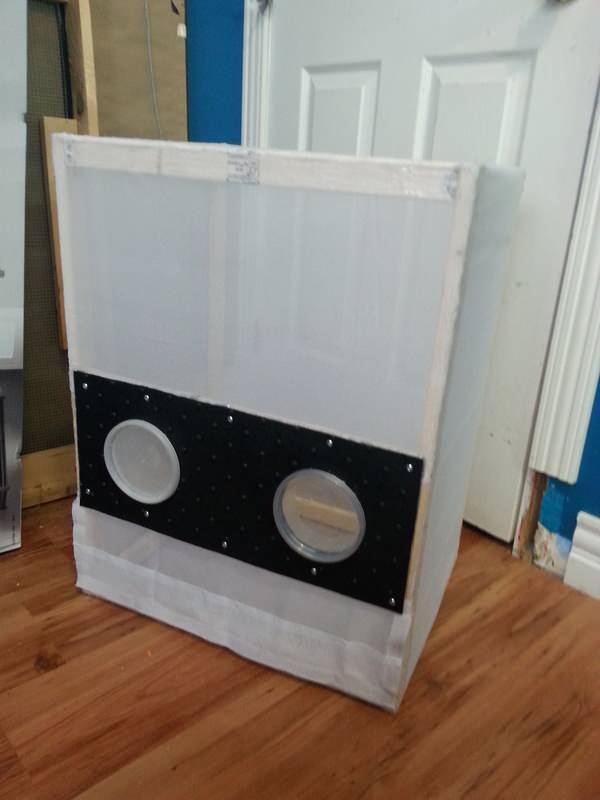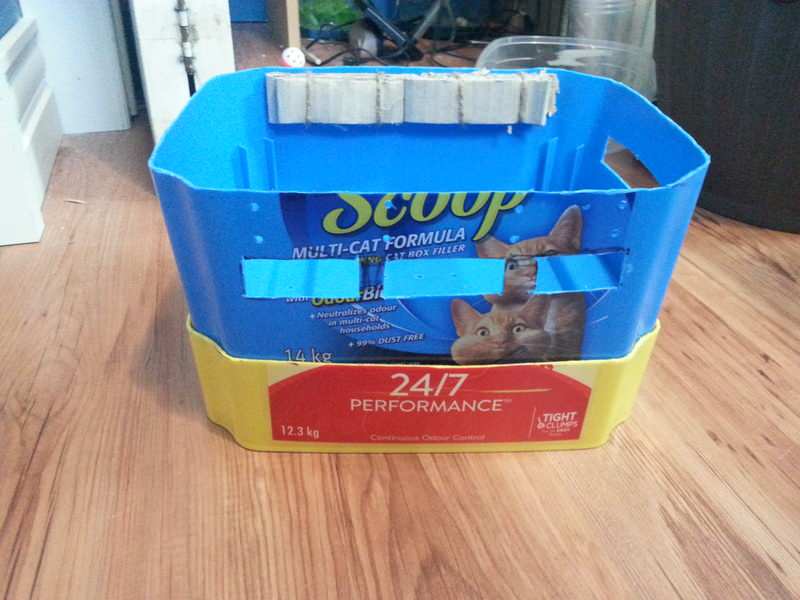Teamonger
Well-known member
As soon as I found out that BSFs could be raised indoors and ate mostly coffee grounds I was sold on attempting to raise them myself as feeders. Unlike blue/green bottle flies or other blow flies their is no horrible smell from the set up, rather its actually an earthy or coffee smell that is quite pleasant.
I have done a lot of research but didn't find much about BSF on the forum so figured it might be of interest to others if I documented my journey.
First of course I purchased some Phoenix worms (BSF larva) from a local supplier. I'm starting out with a 100.
The larva are very easy to care for. I just stole some used coffee grounds from work (I don't drink coffee), mixed in some used tea leaves, some coco fiber 'dirt', and threw in a slice of potato and they have been happily munching away for over a week now.
Second I had to build an enclosure for the flies so they could go through their life cycle. For this purpose I built this!

This is just a wooden frame that I used my trusty glue gun to glue a cheap curtain all over it to make a nice escape proof cage.
The bottom front panel is secured by Velcro to allow for proper access to clean the habitat or add things when the need arises.
As you can see I also took a page from CosbyArt's large feeder tutorial and added in two sleeved access holes. I still need to add the sleeves but that should only take me another few minutes.
Secondly I wanted to make a bigger and better bin for once I have adults to lay eggs and hopefully more larva to feed.
Currently with only 100 larva I'm keeping them in a smaller container to ensure they can keep on top of the mold that would usually grow in their food medium. The seem to be having no problem at all in their current yogurt container.


This bin is the upgraded one I constructed. Cat litter bins have this lovely little stacking space in them that will serve wonderfully for drainage. So I grabbed two out the the recycling, cleaned them thoroughly, and went to work. The top one has holes for drainage to ensure the larva do not drown. The cardboard tied to the sides will be for the adult females to lay their eggs. BSLs do not lay their eggs directly on food but nearby it so you have to offer them something to allow them to do this.
The little windows in the sides are actually so the larva can escape. The food medium will come up level with those windows so that when its time for the larva to pupate they can fall out into some dry coco fiber substrate and do their thing.
And that´s as far as I've gotten so far. I'm waiting for my first 100 larva to begin pupating and I'll keep this thread updated with my progress.
I have done a lot of research but didn't find much about BSF on the forum so figured it might be of interest to others if I documented my journey.
First of course I purchased some Phoenix worms (BSF larva) from a local supplier. I'm starting out with a 100.
The larva are very easy to care for. I just stole some used coffee grounds from work (I don't drink coffee), mixed in some used tea leaves, some coco fiber 'dirt', and threw in a slice of potato and they have been happily munching away for over a week now.
Second I had to build an enclosure for the flies so they could go through their life cycle. For this purpose I built this!

This is just a wooden frame that I used my trusty glue gun to glue a cheap curtain all over it to make a nice escape proof cage.
The bottom front panel is secured by Velcro to allow for proper access to clean the habitat or add things when the need arises.
As you can see I also took a page from CosbyArt's large feeder tutorial and added in two sleeved access holes. I still need to add the sleeves but that should only take me another few minutes.
Secondly I wanted to make a bigger and better bin for once I have adults to lay eggs and hopefully more larva to feed.
Currently with only 100 larva I'm keeping them in a smaller container to ensure they can keep on top of the mold that would usually grow in their food medium. The seem to be having no problem at all in their current yogurt container.


This bin is the upgraded one I constructed. Cat litter bins have this lovely little stacking space in them that will serve wonderfully for drainage. So I grabbed two out the the recycling, cleaned them thoroughly, and went to work. The top one has holes for drainage to ensure the larva do not drown. The cardboard tied to the sides will be for the adult females to lay their eggs. BSLs do not lay their eggs directly on food but nearby it so you have to offer them something to allow them to do this.
The little windows in the sides are actually so the larva can escape. The food medium will come up level with those windows so that when its time for the larva to pupate they can fall out into some dry coco fiber substrate and do their thing.
And that´s as far as I've gotten so far. I'm waiting for my first 100 larva to begin pupating and I'll keep this thread updated with my progress.
Last edited by a moderator:












































